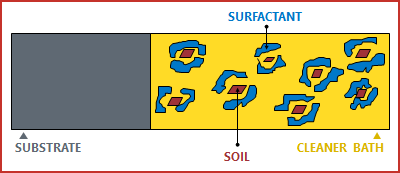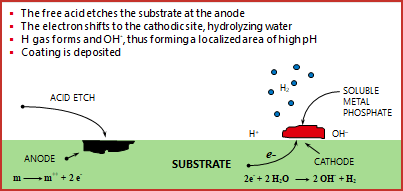Pretreatment Capabilities
Advanced Surface Treatment Solutions by PTI QCS: Alkaline Cleaning, Iron & Zinc Phosphate Treatments
PTI QCS is committed to delivering top-notch surface treatment solutions, ensuring your materials are optimally prepared for further processing or use.
PTI QCS OFFERS ALKALINE CLEANING
- Effective Contaminant Removal: This process expertly removes surface contaminants from parts, specializing in dealing with oily soils.
- Advanced Detergency: The products used boast exceptional detergency, effectively targeting greasy and oily surfaces.
- Enhanced Wetting and Emulsification: Our alkaline cleaning involves surfactants that enhance the wetting of oily surfaces, aiding in the emulsification and dispersion of oils and soils.
PTI QCS OFFERS IRON PHOSPHATE TREATMENT
- Optimal for Multiple Surfaces: Ideal for treating Aluminum, iron, or steel surfaces before painting.
- Molecular Surface Transformation: This treatment causes a reaction that alters the molecular structure of the surface, significantly improving paint adhesion – up to 1,000 times better than untreated metal.
- Increased Durability: Iron phosphating enhances impact resistance and flexibility.
- Oxidation Prevention: Treated surfaces can prevent the progression of oxidation under the paint when impacted.
- Amorphous Coating Benefits: Also known as an amorphous coating, it provides a bondable surface and contains iron and phosphates without crystal formation.
PTI QCS OFFERS ZINC PHOSPHATE TREATMENT
- Crystalline Conversion Coating: Suitable for steel and other metals, forming a crystalline conversion coating on ferrous metal substrates.
Preparation for Coating or Painting: Employed as a pretreatment step to enhance corrosion protection and impact resistance.
Versatile Application: Useful for threaded parts and combined with oil (P&O) for anti-galling and rust inhibiting properties.
Tri-cationic Chemical Conversion: Alters both the chemical and physical nature of the metal surface, improving paint adhesion and corrosion protection.
Surface Replacement with Stable Minerals: This process replaces metal surfaces with a stable, non-metallic polycrystalline surface, integrating Zinc, Iron, Manganese, Nickel, and phosphates into the crystals.


